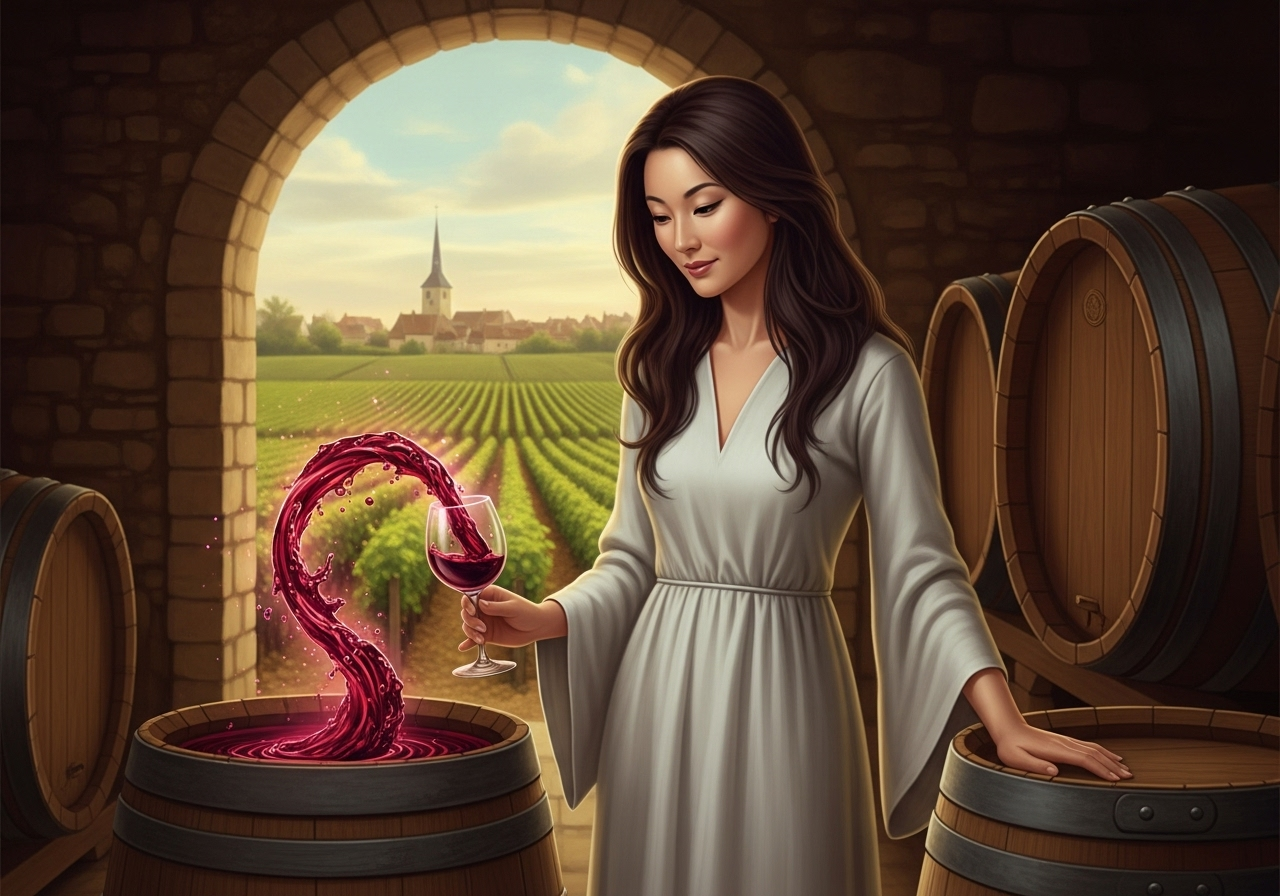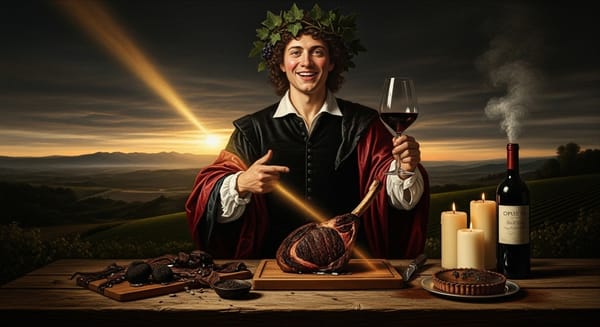Vosne-Romanée: The Steady Pulse of Burgundy’s Heart
Voyage through Vosne‑Romanée—the Côte de Nuits commune where monastic ledgers, biodynamic vines, and climate‑shifting harvests converge to craft Pinot Noir of haunting depth. Meet producers like DRC, Leroy, and Méo‑Camuzet, and learn how these wines age, serve, and inspire collectors.

Morning enters Vosne-Romanée on tiptoe, casting soft gold between vine rows while dust motes glow like hanging lanterns. The village offers no fanfare—only a single bell stroke, a ribbon of woodsmoke, and the hush of air scented with violets and warm ferment. Some places shout for attention; Vosne simply exists, certain the world will lean in. I have watched pilgrims trace its narrow lane as though following veins to a quietly beating heart. They arrive seeking proof that devotion matters and depart with bottles that feel less like possessions than entrusted memories.
Pause along those low stone walls and the ground hums with layered recollection: monks marking furrows by candlelight, families wagering futures on frost‑nipped buds, barrels breathing beneath cool cellars. Names such as Romanée‑Conti, Richebourg, and La Tâche gleam like gilt initials on an heirloom locket, yet the landscape remains modest, even shy. Greatness has settled here not as thunder but as evening mist—inevitable, intimate, carried with deliberate grace by a village that knows patience is the only true currency.
Scriptures in Stone and Vines
If Burgundy were a palimpsest, Vosne‑Romanée would be the line the scribes refused to scrape away. Gallo‑Roman farmers first penciled vine rows here; Benedictine monks inked them with detailed ledgers, noting which furrow ripened a day sooner, which hollow trapped morning mist. When the Dukes of Burgundy dissolved, bourgeois families stepped in, sealing their fortunes to the land with sealing‑wax and marital contracts.
The village’s destiny pivoted in 1760 when the Prince of Conti purchased a shy, draught‑shaped plot above the road and barred its wines from all but his own table. The gesture was equal parts vanity and vision: vanity because it denied pleasure to others, vision because it labeled scarcity as virtue. Even after the Revolution shredded noble deeds, nothing could unspool the story; by then, Romanée‑Conti had become an idea as much as a wine.
Railroads and phylloxera arrived in cruel tandem during the 19th century. Vignerons dug out dead roots, grafted American stock, and wondered whether the soul of Pinot would survive the operation. It did—partly because parcels were atomized by Napoleonic inheritance law, letting each family experiment on its own acre without risking the collective. In the 20th century, war tanks briefly outnumbered tractors, yet bottles still slumbered under stone houses, awaiting a different form of liberation.
Modern lore centers on meticulous individualists: Henri Jayer coaxing Cros Parantoux from frost‑bitten obscurity to cult status; Lalou Bize‑Leroy converting entire domaines to biodynamics before the term felt fashionable; Aubert de Villaine steering DRC through both boom and scandal with monk‑like composure. Each generation adds a footnote; the margin is crowded but never closed.
Where Currents Kiss the Slope
Stand mid‑slope at dawn and you’ll taste two currents colliding on your lips: a cool sigh descending from the Hautes‑Côtes and a faint thermal lift rising from the Saône Valley. Their meeting prolongs véraison as if the berries were reluctant to choose a dress color. Beneath your boots, soils turn from shallow, stony marl in Les Beaux Monts to denser, iron‑flecked clays in La Tâche. Limestone forms the silent scaffolding, but drainage patterns, organic matter, and aspect carry the dialogue.
Climate change has begun to tilt that conversation. Harvests now arrive roughly two weeks earlier than in the 1980s, a rhythm shift that forces growers to balance phenolic ripeness against sugar spikes. Some counter by shading bunches with a leaf‑layer left intact; others pick in the pre‑dawn hush and rush fermenters full by mid‑morning. Vosne’s altitude—around 250 meters—and its persistent airflow still grant reprieve. Even in the torrid 2025 season, acidity held like a closed umbrella, unfurled only when the wines met oxygen months later.
The village has become a laboratory of restraint: fewer herbicides, more cover crops, lighter canopies. The goal is not to arrest change, but to teach vines to breathe through a tighter corset of summer heat. Each adaptation writes a new stanza in the ongoing poem of place.
Hands That Teach the Vines to Breathe
Vine trunks here resemble elderly pianists’ fingers—gnarled yet articulate. Average age hovers near fifty years; some parcels of Romanée‑Saint‑Vivant count twice that. Winter pruning follows the ancient Guyot system but with modern austerity: one shoot too many sacrificed now saves dilution later. Spring sees biodynamic teas misting the rows; horse‑drawn ploughs still score the soil in Leroy’s holdings, their hooves lighter than any tractor tire.
Canopy management is choreographed rather than executed: shoots angled to invite dappled light, laterals pinched but not scalped, maintaining a micro‑shade that protects Pinot’s delicate skin. Through July, inter‑row cover crops—fava beans, wild mustard—pull nitrogen while crowding out weeds. Come August, vignerons walk the rows with secateurs and empathy, clipping green bunches so the chosen few may speak clearly.
Harvest remains a hand‑picked pas de deux between ripeness and rot. Teams move in near silence save for the rustle of crates; every cutter knows the price of complacency. Grapes arrive at the cuverie intact, dusted with bloom, their juice still gripping seeds and secrets.
Pinot’s Many Moods in a Single Voice
Pinot Noir in Vosne‑Romanée behaves like a seasoned actor refusing typecasts. In its youth it opens with redcurrant, hibiscus, and the faintest static of white pepper. Turn the calendar and it deepens into black‑cherry depth laced with sandalwood. Enter its third decade and you may find anise, autumn fern, sometimes the echo of cured game.
Village‑level bottlings offer swift, flirtatious pleasure: bright fruit, soft tannins, a finish that pirouettes then bows. Premier crus such as Les Suchots or Les Malconsorts are coiled springs; swirl and they tighten, sip and they leap. Cros Parantoux, born from meager topsoil and decades of human stubbornness, marries minerality to amplitude, a paradox that keeps sommeliers awake at night. Grands crus—La Tâche, Romanée‑Saint‑Vivant, Richebourg—reveal pedigree slowly, like dawn turning ink into landscape.
A whisper‑small acreage of Chardonnay peers from La Romanée‑Blanche, offering floral, saline whites that rarely travel far. They play flute to Pinot’s violin: charming but secondary.
The Alchemy of Gentle Persuasion
Vosne’s cuveries read as variations on a single theme: respect the grape, bend only the rules that deserve bending. Whole‑cluster use has returned to favor, but degrees vary. At DRC, about 70 % stems coax herbal lift; at Méo‑Camuzet, the proportion shifts with vintage temperament, one year half, the next barely a fifth. Destemming advocates—Sylvain Cathiard among them—prize crystalline fruit clarity, arguing that perfume should float, not cling.
Fermentations proceed in wooden vats or small steel tanks under the gentle guidance of gravity—pumps are distrusted intruders here. Pigeage might involve a winemaker’s bare feet, though more often it’s a stainless‑steel plate lowered softly, a punctuation mark on the day’s chapter. Temperature peaks rarely exceed 30 °C; aroma always outranks color density.
Élevage choices season rather than dominate. François Frères barrels with medium toast prevail; some experiment with tighter‑grained Austrian oak. New‑oak percentages scale with hierarchy: village wines see 15–30 %, premier crus around half, grands crus up to 80 % if the fruit sings loud enough to lead the orchestra.
Names Carved in Twilight
Stroll the rue des Communes as work lamps flicker on and you witness a living anthology of intent. Lalou Bize‑Leroy steps from her Richebourg rows, hands stained like watercolor, sniffing a cut stem as though verifying a rumor of ripeness. Downhill, Jean‑Nicolas Méo circles a vat, notebook in hand, chronicling the pulse of Cros Parantoux—the cap undulates like a dark heart responding to warmth. Across a courtyard, Aubert de Villaine lifts a thief from Romanée‑Conti; the sample catches porch‑light and glows pomegranate‑dark, trembling under the weight of expectation. On the northern flank, Sébastien Cathiard rinses pipettes while his father murmurs vintage notes across the barrels, a rite older than the labels they will affix next spring.
No plaque announces these moments. They pass into memory like steam, re‑condensing later in the finished wine.
Stewardship of Time and Memory
Patience is Vosne‑Romanée’s native currency. Village wines settle into poised balance after five years and often charm for a decade; premiers crus usually unfurl between twelve and twenty; grands crus like La Tâche and Romanée‑Conti are long novels whose finest chapters appear only after two or three decades. Ideal repose demands 12–13 °C, 70 % humidity, darkness, and stillness. Young bottles benefit from a brief decant—about ten minutes per year of age—while venerable wines should glide straight from bottle to glass, allowing sediment to keep its counsel. Serve at 16 °C in tall‑tulip stems that give perfume room to pirouette.
Time in the cellar, however, is only half the story. Vosne‑Romanée rewards not just the financially shrewd but the emotionally patient. Owning a bottle feels like holding a signed first edition whose plot deepens every time you revisit it. Frost or hail may halve a vintage and buoy prices, yet the truest dividend is cultural: a La Grande Rue uncorked on a milestone birthday lends context to the calendar; a Richebourg shared at a reunion forges new vocabulary among friends. The central question shifts from “Will this appreciate?” to “Will I be brave enough to open it when the right memory arrives?” Stewardship, not speculation, is the village’s gentle admonition.
When Time Speaks in Red
Empires have risen and satellites tick overhead, but this narrow hillside remains a red stitch holding centuries together. Vosne‑Romanée does not plead for admiration; it quietly wagers that devotion will find its way home. Taste its Pinot Noir and time consents, however briefly, to speak in a language we can drink. The burden of greatness becomes suddenly weightless, transferred from village to glass to the stunned drinker who realizes that for a moment—the moment—the world is exactly enough.





